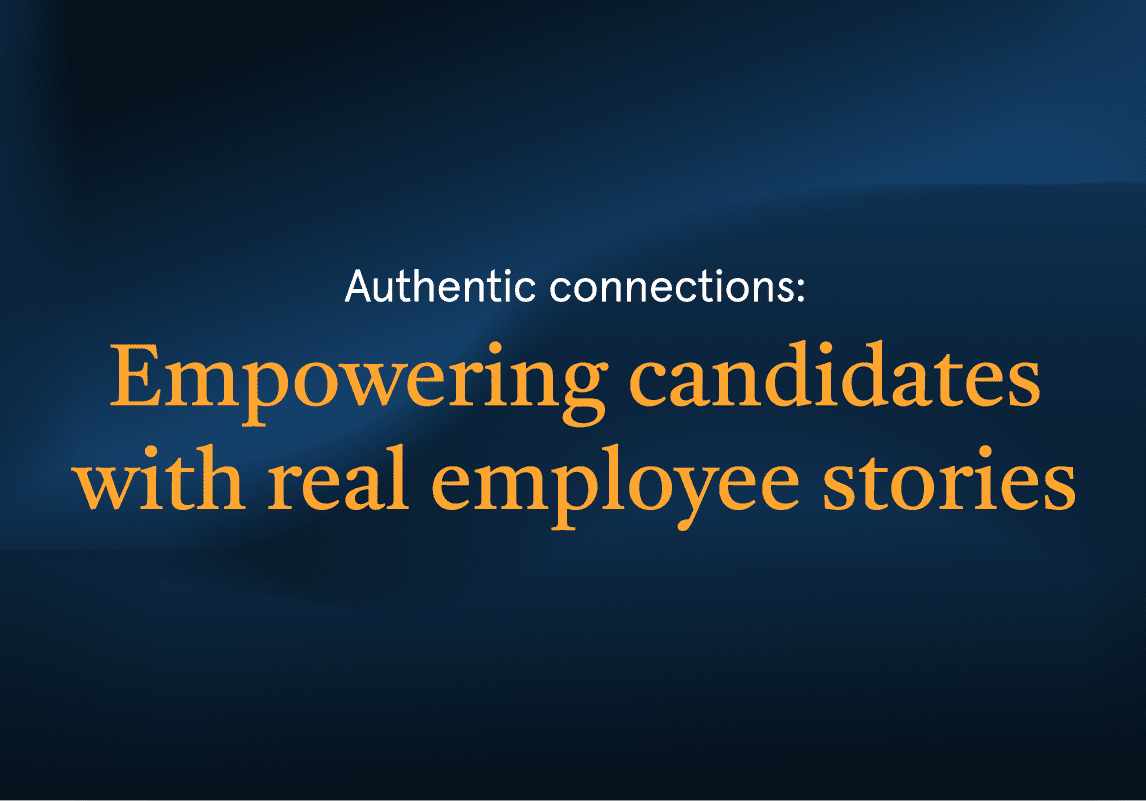How did you find your way into TA, what’s your story?
I wanted to move to Los Angeles, thought I might want to get into acting or show business or something out there. There was one company that came to our Florida State career fair that had an office in L.A. and it happened to be a technical recruiting firm. I wanted to get out there, so my entrance into recruiting was completely accidental. Once I got into it, and started recruiting, and just learning about the space and the connections, relationship building and influencing and just all the different things that make up recruiting, I fell in love, and it was something that I really enjoyed and obviously stuck with.
Tell me more about that, your early years.
The field of recruiting has evolved dramatically and I think that my early education in marketing is certainly relevant for me. It’s one of the things that I think has really kept me interested in the space. I think recruiting, especially for those of us that are involved on the branding and talent attraction side, has become a creative discipline and that absolutely leverages some of my early education in Marketing. We’re really trying to hone our skills in marketing because there’s a lot of rigor and practice that’s well established, but for me employer branding is still early days when it comes to recruiting.
What works best to engage and nurture candidates?
Social media is valuable especially once you get people’s attention and awareness, you can start to influence them, but it’s often not as personalized as it may need to be. Email is still a very underused resource, especially for people you’ve already danced with a little bit. You can then get to know them better, their desires and their drivers, and start to serve up content that’s tailored to them specifically. That’s probably one of the general limitations —although there are exceptions— to social media, that it’s more of a broad brush. The phone is also a very underrated resource. There’s a clear point of differentiation for people that are actually willing to use the phone to keep their candidates engaged and nurture them along. Ultimately you have to tailor what you’re good at as an employer, but you also have to tailor to what your prospects want in terms of their preferred communication channels.
How about passive prospects?
If your message isn’t tailored to the communities you’re trying to convert, you have almost zero chance of converting them. That’s particularly true for passive talent. The key is to understand the drivers, desires and interests of those you’re trying to reach, and deliver content that’s catered to what they’ll find interesting. You could persona map the hell out of a software engineer, but if you’re just blasting out job postings, that’s not going to convert somebody who’s passive. Instead, if you provide value by sharing industry trends, or hacks, or talks from well-respected speakers in the field, that now becomes valuable to them. They might consume that whether they’re looking for a job or not, and now you’re on their radar.
What’s one of your most favorite campaigns?
My favorite will always be the #NPRLife hashtag at NPR. It was my first deep-dive into employer branding and employee advocacy. It was a method of finding real stories from real employees that share the real employee experience and posting it on Twitter. We never formally launched it, but it gained traffic organically because I think people just saw their peers using it and it became a really powerful storytelling platform about the employee experience and so, when I look back, that was definitely one that sticks with me. With a non-profit budget, Twitter was actually our number four source of hire, which is incredible because for me, it cost us nothing but time (still a powerful concept 6 years and counting – generating amazing #NPRLife stories – Check it out).
How do you get your company to stand out?
I think the early stages of employer branding was focused on selling the very best of who they were, and brushing aside negatives. The problem was it clogged recruiting funnels where lots of people bought into the “sizzle.” If we had shared the whole story, only the ones that fit best may have jumped in with both feet. Today, I think to rise above the noise, you have to understand your market, and tell stories in ways that will resonate with the audience that you’re trying to reach. Most importantly, because attention spans are short, be “snackable” with bite size bits of content. When you’re vying for that mind-share of attention, being snackable, being interesting, being relevant, being real — those are all things that I think will help differentiate.
What’s the secret to converting great prospects into candidates?
Being relevant. There has to be something they can “get” from it. People see right through sizzle. As the field matures, we’re getting bigger budgets, and more sophisticated. I’ve seen beautifully produced, glossy content that’s production-worthy, but it doesn’t feel real. Fuzzy content shot on an iphone can be more engaging. It doesn’t have to be super slick and glossy to be effective. Wherever you can find ways to give your employees a voice and share their experience. I think employee generated content (EGC) is employer branding gold because it’s trusted. There’s a real trust gap in corporate messaging, no matter how slick or well-produced or well-designed it is. So, wherever you can find opportunities to showcase employees in their own voice, those tend to be campaigns that work the best.


